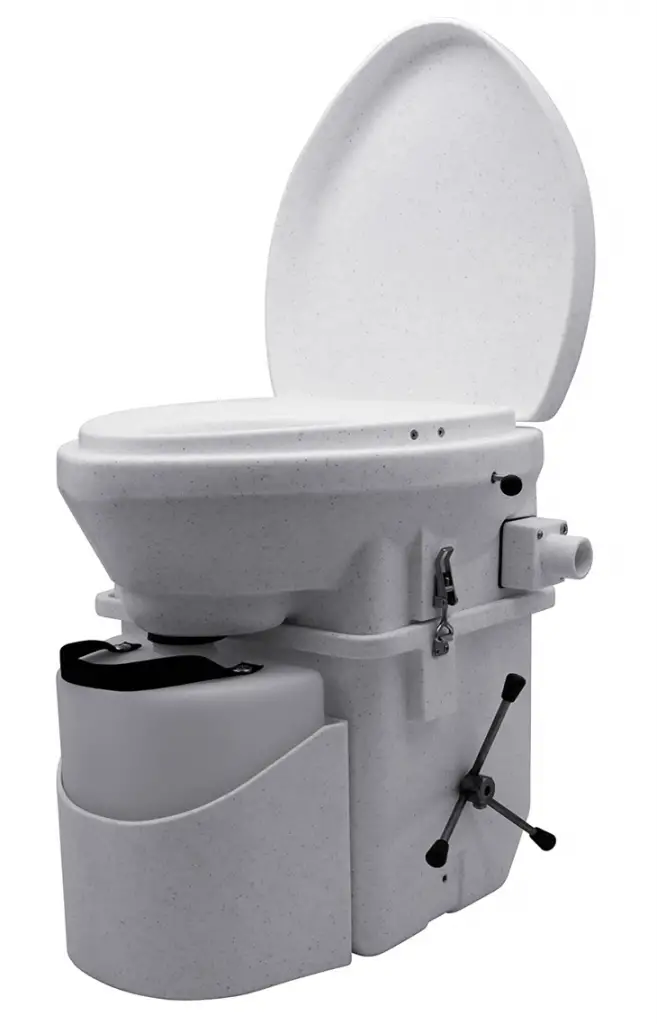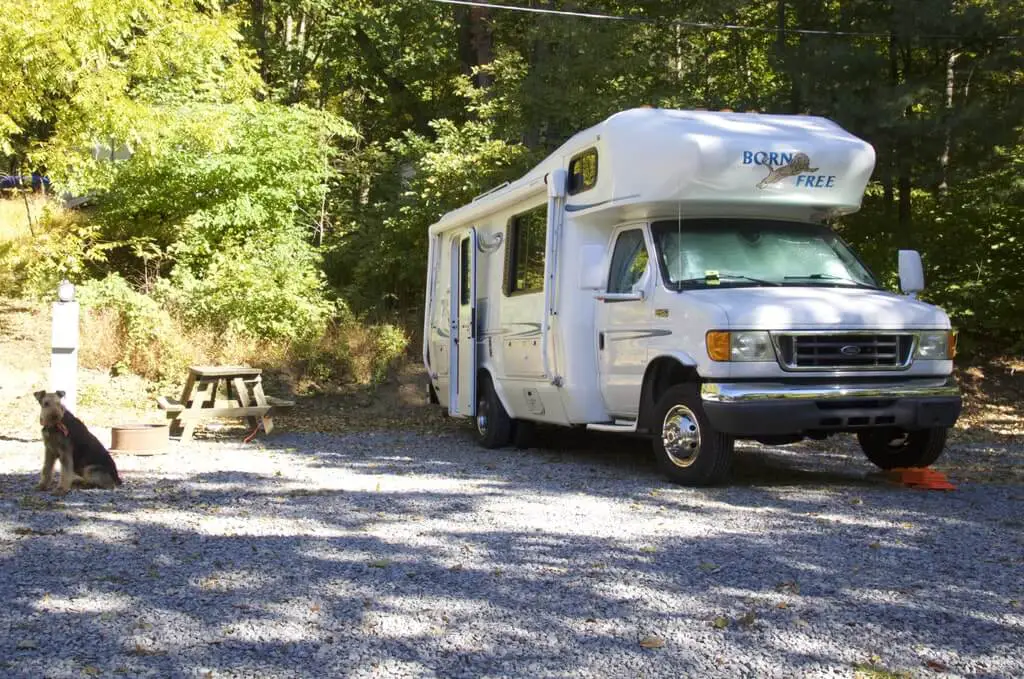RV composting toilets are a green, organic alternative to typical RV toilets that use water and plumbing for their operation and disposal. Unlike traditional RV toilets, RV composting toilets do not require external holding tanks.
Table of Contents
What is a composting toilet?
A composting toilet is a type of dry toilet that treats human waste through a biological process known as composting. As a result of this process, organic matter decomposes and becomes compost-like material.
The process of composting is carried out by microorganisms (primarily bacteria and fungi) in an aerobic environment.
Composting toilets do not use water for flushing, so they are often called “dry toilets.”
This is how it works:
- After each composting toilet use, a carbon additive such as sawdust, coconut coir, or peat moss is added.
- By doing so, the carbon-to-nitrogen ratio is also improved, and potential odors are reduced.
- The majority of composting toilet systems rely on mesophilic composting. In addition, a longer retention period in the composting chamber facilitates the death of pathogens.
- The product you get can also be moved to a secondary system – usually another composting step – to allow mesophilic composting to further reduce pathogens.
- Composting toilets don’t need a connection to septic tanks or sewer systems, unlike flush toilets.

Why do you need a composting toilet in your RV?
Composting toilets work; they are odor free, have a toilet seat, and deliver an end product from the composting process that you can add to your compost pile safely.
You probably don’t need one in your RV, but when you consider the advantages like energy and water efficiency and the fact that you will no longer need a black tank full of toilet waste, you may want a composting toilet in your RV.
Since RV composting toilets can be easily emptied on your own, campground visits are unnecessary and you can freely go RVing wherever you want. Due to this characteristic, they are ideal for RVers into boondocking or living off the grid.
How does an RV compost toilet work?
Here is a quick explanation of how the RV compost toilet works to understand better if it is right for you.
The black water from a regular camper toilet is collected in a black water holding tank. The waste is stored here until it is emptied via a sewage hose. Thus, this system suits those who frequent campgrounds with available hookups.
On the other hand, the composting toilets used in RVs are very different:
- In this process, human waste is broken down by decomposition and evaporation.
- As most of the material is water, it evaporates into the atmosphere through the vent system.
- Solid waste decomposes into fertile soil that can be used as fertilizer.
In addition, the composting chamber performs all the dirty work. Here, oxygen, heat, moisture, and organic material are combined with aerobic bacteria. As a result of the interaction between these compounds, the waste is converted into fertilized soil.
Bacteria break down all pathogens and viruses during this process, making the soil sterile and ready for use.
The composting toilet is capable of handling liquid waste. Around 90% of the waste is composed of water. They use a urine diverter to separate pee from poop, so the waste tank is really two: a liquid container/liquid tank and a solid waste bucket.
Composting toilets allow you to use toilet paper, they fit in a tiny home, motorhome, or camper and can make your RV life or van life independent and free from having to go to dump stations on campgrounds.
So, if you are open to straying from the traditional toilet, a self-contained composting toilet may be the one for you.
The pros and cons of an RV composting toilet
| Compost toilet pros | Compost toilet cons |
| No hookups required | Initial investment needed |
| Space saving | Maintenance needed |
| Minimal power consumption | Installation needed |
PROS
1. No hookups required
As this entire process occurs in one self-contained unit, there is no septic system or connection for this toilet.
This no-flush system is also used by people living in remote areas, tiny houses, boats, and cabins.
It is low maintenance and eliminates the need to stop at a campground.
2. Space-saving
RV composting toilets are popular due to their compact design. Since they do not require a black water tank attachment, they can be placed almost anywhere. Due to their size, they are ideal for camper bathrooms, which are usually small and difficult to access.
Moreover, with fewer parts and mechanisms, repairs are simpler. As a result, you will not be required to squeeze into small spaces to locate leaks or tighten loose screws.
3. Environmentally/Eco-friendly
It is estimated that the average family saves almost 8,000 gallons of water each year by using a composting toilet.
Using these toilets also reduces the need for sewage treatment plants, which use harmful chemicals to treat raw waste.
4. Power consumption is minimal
The exhaust fan that evaporates water consumes a small amount of energy. RV composting toilets can be powered by solar energy.
Otherwise, it can be powered by a 12-volt battery or by 110-volt shore power.
CONS
1. You need to get used to it
A properly fertilized product will be free of bacteria and will resemble topsoil. The idea of touching something that was once your waste is undoubtedly an odd one for some individuals.
However, rest assured that the soil is sanitary and safe to handle.
2. Composting toilets cost
Due to their unique mechanism, which makes them both practical and easy to use, their price is higher.
For most campers, these toilets are worth the initial investment since they eliminate the need to use hookups.
The best composting toilet for RV: my recommendation
Nature’s Head composting toilets are by far the most popular and considered the best composting toilet overall.
These are great additions to your camper because they’re affordable and last a long time. They last about three weeks, or 60 to 80 uses before they need to be emptied.
With the right attachment, you can hook it up to a 110-volt power source if it runs on 12-volts, non-battery.
Nature’s Head toilets come in two kinds, with the main difference being the handles and seats.
Spider handles take up only 2 inches more space, but they’re harder to turn. In contrast, the standard crank handle is much easier to turn but takes up five extra inches.

